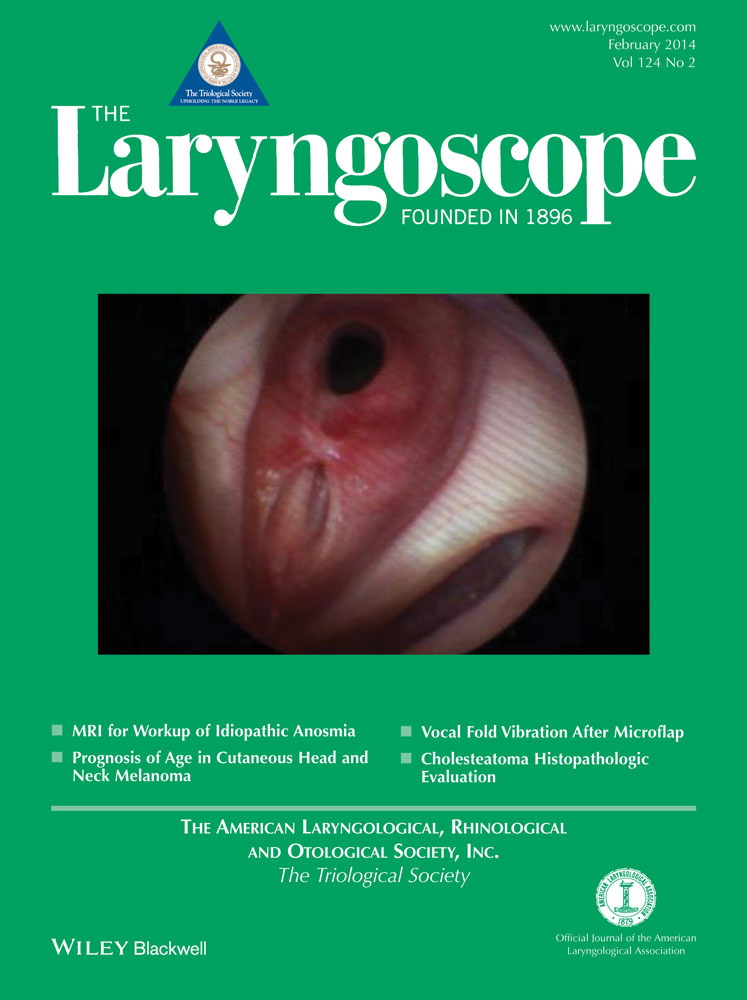Application of ionomer cement onto the stapedial footplate: Impact on the perilymphatic aluminum level
The authors have no funding, financial relationships, or conflicts of interest to disclose.
Abstract
Objectives/Hypothesis
From an acoustic aspect, fixation of the medial end of an ossicular replacement prosthesis to the stapedial footplate would be desirable. Technically, ionomer cement seems an ideal material for this purpose. The objective was to determine the aluminum level of the perilymph after the application of ionomer cement on the stapedial footplate.
Study Design
An experimental study on rabbits.
Methods
A total of 25 Pannon White rabbits were divided into three groups. Five rabbits (group I) underwent sham operation; in 15 animals (group II) ionomer cement was applied onto the stapedial footplate; and in 5 cases (group III) the application of the cement onto the footplate was followed by opening of the vestibulum. In groups of 5, the animals were killed on day 1, 7, 30, 180, or 365 postoperatively. Fluid samples were taken from the vestibulum and their aluminum levels were determined.
Results
The average aluminum level in the fluid was insignificantly lower in group II than in group I, but significantly lower in groups I and II than in group III.
Conclusion
As a glue, ionomer cement safely can be applied directly onto the footplate without the threat of raising the perilymphatic aluminum level, provided that there is no perilymph leakage. However, in the event of an open vestibulum, the application of cement onto the footplate is to be strongly discouraged due to the danger of a consequent increase in the aluminum level in the perilymph and the cerebrospinal fluid.
Level of Evidence
NA. Laryngoscope, 124:541–544, 2014




